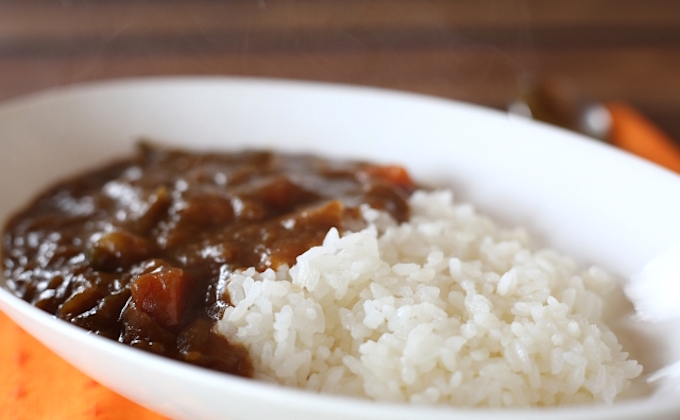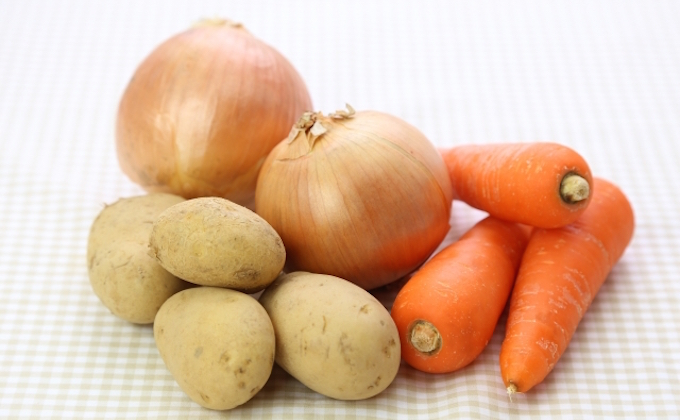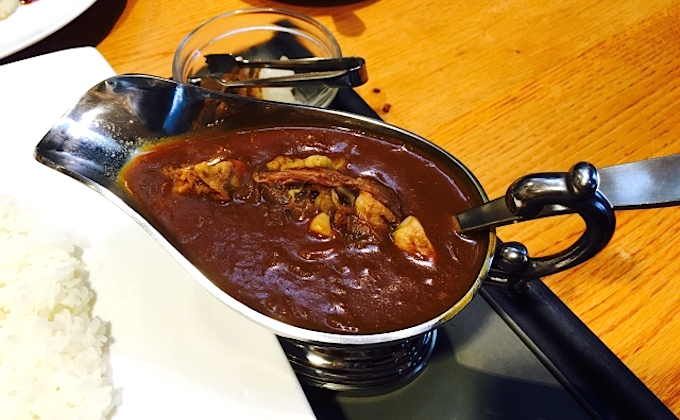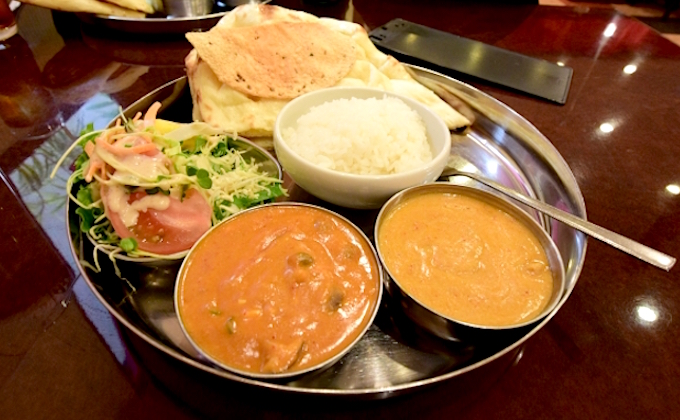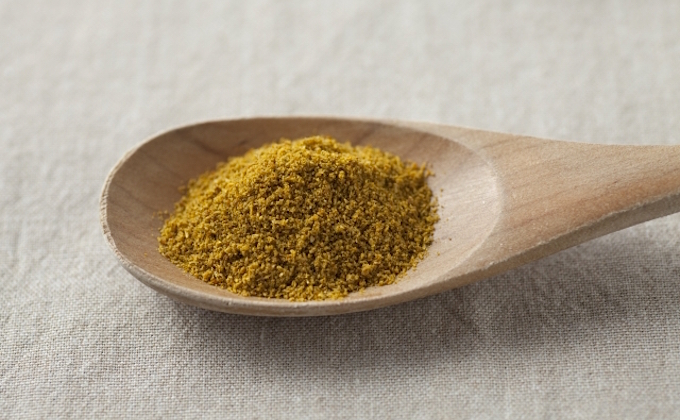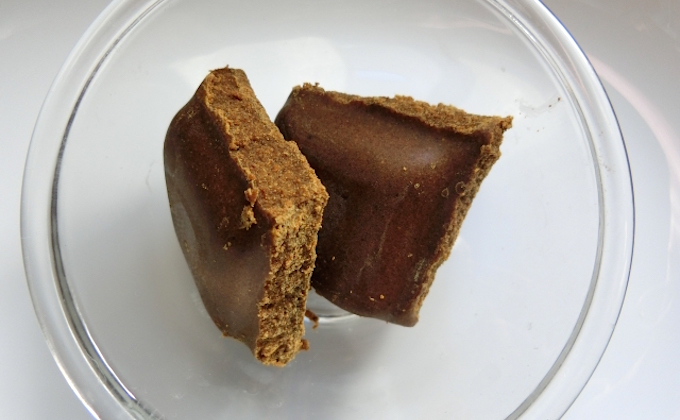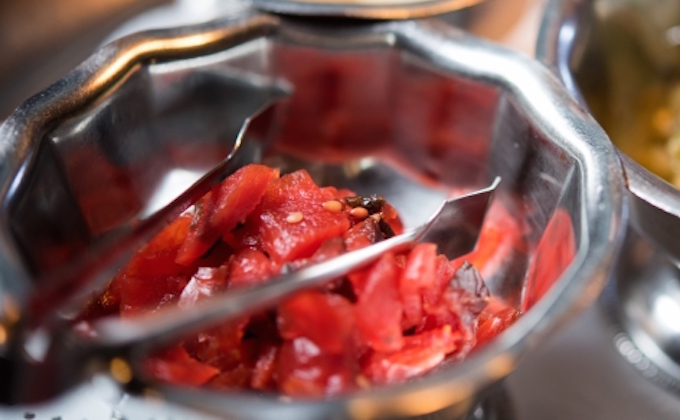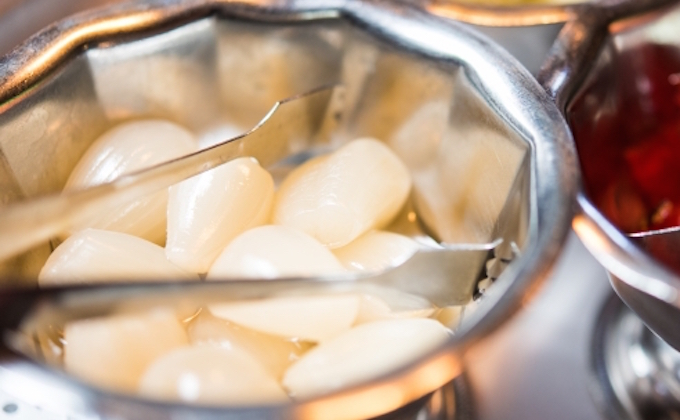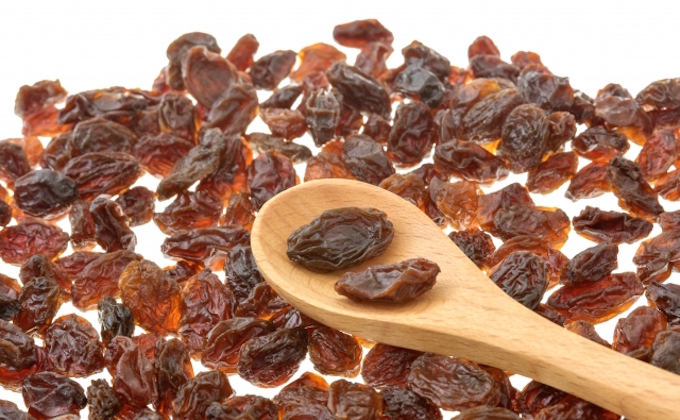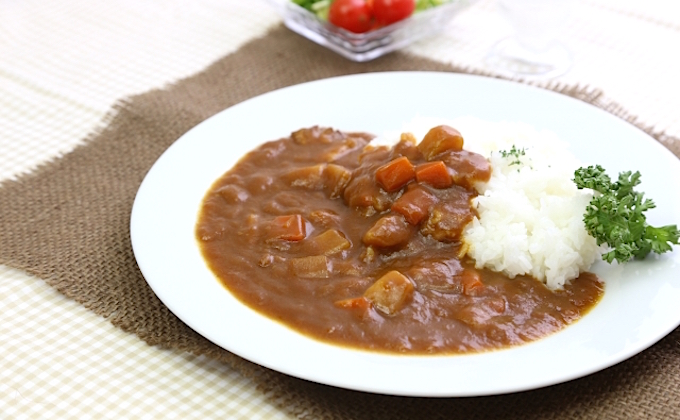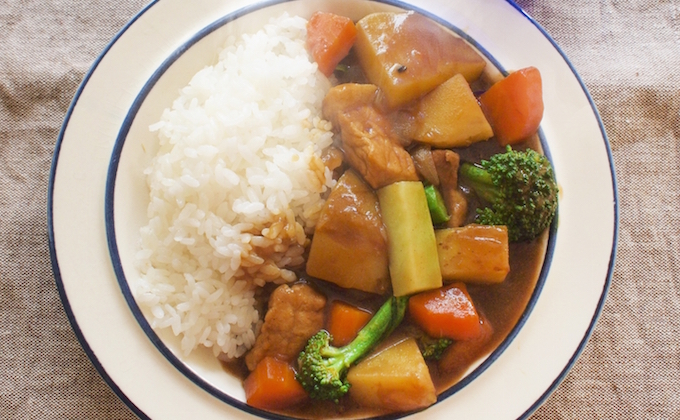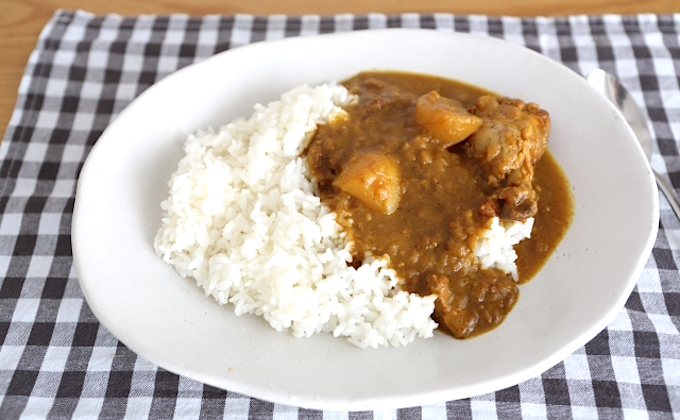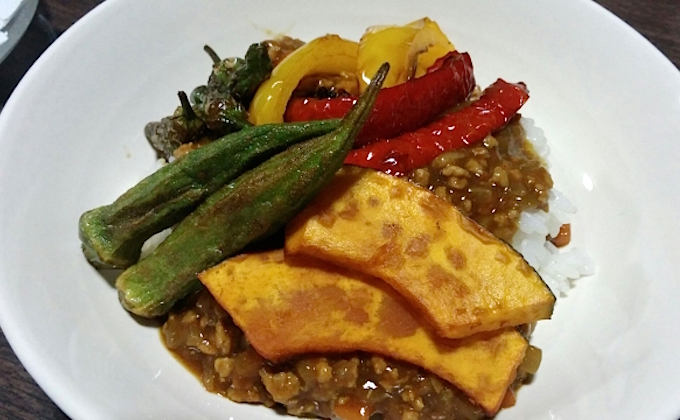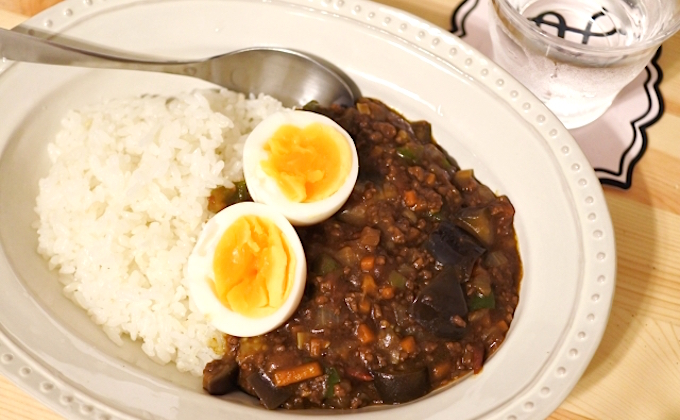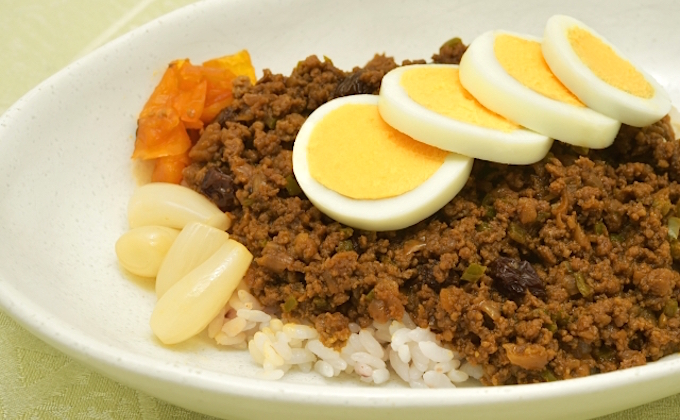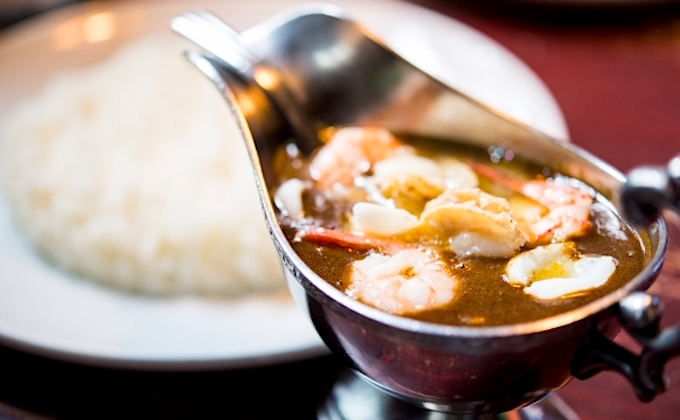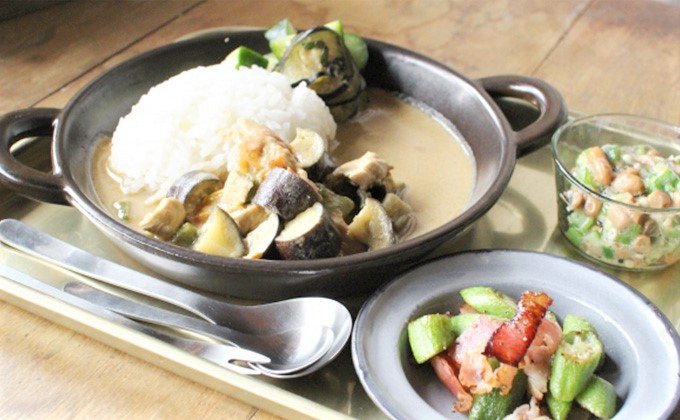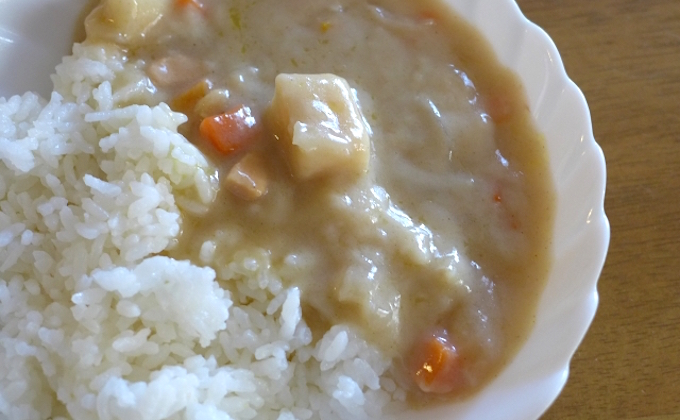TRG Info and Advice
Kareraisu (Japanese curry with rice)
What is kareraisu?
Kare raisu is stewed meat and vegetables seasoned with curry powder (or a variety of spices) over rice.
There are several theories about the origin of the word “curry”, but a widely-accepted theory claims that the word “kari,” which was derived from the Tamil language in the southern part of India, means sauce and became localized. In India, the home of curry, the “sauce” is made from several kinds of spices including cinnamon, coconut, tamarind, and others. The watery roux is eaten with low yielding indica rice or flour-based naan bread. In Japan, however, curry is usually thickened with flour and served with sticky Japonica rice, and accompanied by condiments such as fukujinzuke (a mixture of sweetly pickled vegetables) or rakkyo (Chinese onion) pickles. The curry introduced in Japan did not come directly from India, but was derived from curries arranged in the British style, so there are huge differences between Indian and Japanese curries.
Kareraisu and Raisukare
Both kareraisu and raisukare are served in Japan, and to be exact, the two have a slight difference in style. One theory claims that kareraisu is curry and rice served on separate plates, whereas raisukare is curry served over rice.
When curry was first introduced in Japan and began to spread as a Japanese national dish, it was called raisukare. For housewives who handled their family finances, it was an economic dish that could be stretched with the addition of flour.
After Japan’s period of high economic growth, raisukare began to be called kareraisu, and was transformed from an economic dish to a full-fledged cuisine, thanks to significant dietary improvements.
So, in accordance with the above background, two names for this dish remain. Curry at home is usually served over rice but it is still called kareraisu. Therefore, both kareraisu and raisukare refer to the same dish nowadays.
The History of Kareraisu
Needless to say, curry is the most recognized dish of Indian cuisine. It was first discovered when the British Empire took control over India in the 18th century. Warren Hastings, a clerk of the British East India Company and later first Governor-General of British India, brought powdery mixes of spices, plus rice, home in 1772, and curry spread around Britain. It was extremely difficult, however, for British people to cook mixing various spices, unlike Indians, who were traditionally familiar with using them.
In the 19th century, a company named Crosse & Blackwell first began selling easy-to-use curry powder, and it became a smash hit in Britain. From the end of Tokugawa Shogunate’s rule to the Meiji Period, once the Treaty of Amity and Commerce was established between the US and Japan, merchants from Europe started trading with Japan. Trading resulted in the exchange of culture from the US, and Europe as well, so British curry was introduced to Japan.
Curry was an elusive, western-style dish served only at restaurants at first, but it gradually became accessible to ordinary people through yoshoku restaurants (ones that feature Japanese versions of western-style cuisine) and cafés, quickly taking root in Japanese food culture.
Curry has become one of two major Japanese staples (along with ramen), because food production companies were able to produce instant curry powders/bases, and ready-made curry in a pouch.
Condiments for Curry
Fukujinzuke
Fukujinzuke is a type of Japanese pickle made from seven kinds of chopped vegetables: including daikon radish, eggplant, renkon lotus root, radish, gourd, shiso (Japanese herb) and sword beans, that are pickled in soy sauce and sugar.
Fukujinzuke was first served as a condiment for curry to the first class passengers on board when the chutney ran out on a foreign route operated by Nippon Yusen, during the Taisho Period.
Rakkyo
Rakkyo is a perennial plant of the family Liliaceae, and consists of white, ball-shaped bulbs that are salted or pickled in sugared vinegar. The original pickles became a condiment for curry and are known as rakkyo in Japan.
Raisins
Raisins are served as a condiment for curry, or sometimes mixed into the roux as a secret ingredient.
Kareraisu Varieties
Beef Curry
When beef is used for curry, it is usually made with a block of meat, which takes time to prepare and must be cooked until soft. Beef is the most popular ingredient of curry.
Pork Curry
Pork curry is reasonably priced. Belly meat is usually chosen because it contains a good amount of fat.
Vegetable Curry
Vegetable curry usually contains chunks of various vegetables. It is both full of the flavor of vegetables, and healthy. Even small children, or those who do not eat a lot of vegetables, can get their daily requirement by eating vegetable curry.
Keema curry
Keema curry is made from chopped vegetables and minced meat, and is less watery than other curries. Keema means “minced meat” in Hindi.
Dorai Kare (dry curry)
There are three types of dorai kare in Japan. 1. Chopped vegetables and minced meat are sautéed first, then flavored with curry powder and seasoned with soup stock. This dorai kare is similar to keema curry, but even less watery. 2. There is another type of dorai kare, which is fried rice flavored with curry powder (it is also called kare chahan). Dorai kare mixes for easy cooking at home, as well as, frozen dorai kare packs, are available in most Japanese supermarkets. 3. Another kind of dorai kare is the pirafu (pilaf) type. Rice and curry powder are stir-fried with other ingredients, such as vegetables, and then cooked in a broth.
Seafood Kare
Seafood kare is packed full of the flavor of seafood, and offers a different flavor from meat curry. If frozen mixed seafood is used, seafood curry can be prepared easily and conveniently.
Green Kare (Green Curry)
Green kare is called Thai kare in Japan, but is actually a kind of Thai soup, full of ingredients and spices called kaeng. Most curries are brown or yellow, but green curry, which is made using green chilis, is as green as the name suggests.
White Kare (White Curry)
White kare is curry which originated in Hokkaido and resembles cream stew in appearance. Its base is béchamel sauce, avoiding colored spices (such as turmeric) as much as possible. The flavor is almost the same as ordinary curry, but since it is based on béchamel sauce, white kare has a mellower taste.






